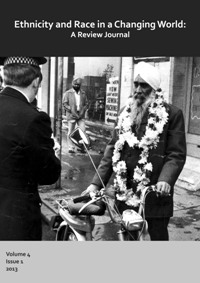Swedish Antiracism and White Melancholia: Racial Words in a Post-racial Society
DOI:
https://doi.org/10.7227/ERCW.4.1.2Abstract
In recent years, a number of heated public debates have taken place in Sweden concerning the on-going use of racially and colonially marked words and expressions in everyday life and public discourse. As Swedish society views itself as, ostensibly, an antiracist and post-racial society, these debates raise uncomfortable questions regarding Swedish antiracism. This article looks at three examples of how the use of colonial and racial words and expressions is defended by predominantly white Swedes in the name of a Swedish antiracist exceptionalism which says that Sweden is a non-racist society, and which therefore means that words such as ‘Oriental’ and ‘Negro’ cannot be denigrating in a contemporary Swedish setting. The article argues that the general inability of institutions, media, academia, individuals and public discourse to take in and accommodate the histories and perspectives of minorities which are inscribed in such words is an expression of a white melancholia which harkens back to an imagined and idealised racially homogenous Sweden, when it was purportedly easier both to be a racist and an antiracist.
Downloads
Published
Issue
Section
License
While copyright in the journal as a whole is vested in Manchester University Press, copyright in individual articles belongs to their respective authors.
Licensing and Reuse for Volumes 1-3
End users of the Author's own institution (or another appropriate organisation), have the right to copy, use, distribute, transmit and display the work publicly and to make and distribute derivative works.
Licensing and Reuse for Volumes 4-5
End users have the right to copy, use, distribute, transmit and display the work publicly and to make and distribute derivative works, under the terms of the Creative Commons Attribution Non-Commercial licence (CC-BY-NC).
For every form of (re)use of the Article as described in the above paragraphs, the Author or the Publisher undertakes always to include the complete source (at least the Author's name, the title and the number of the Publication, and the name of the Publisher).


